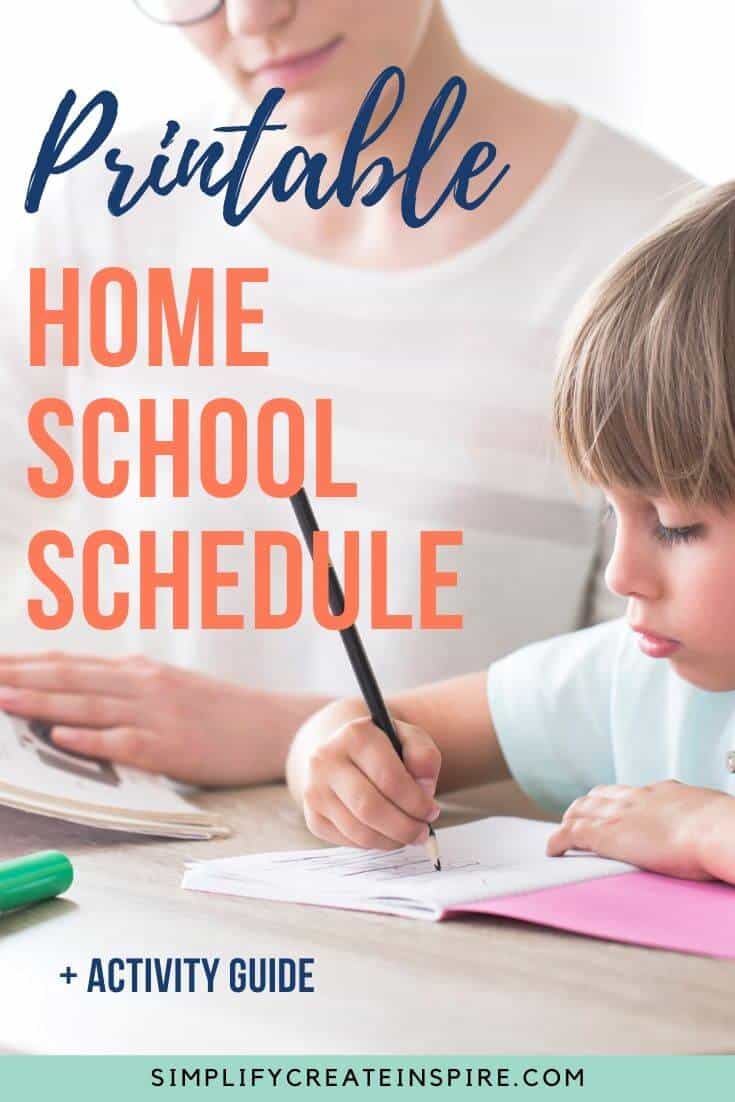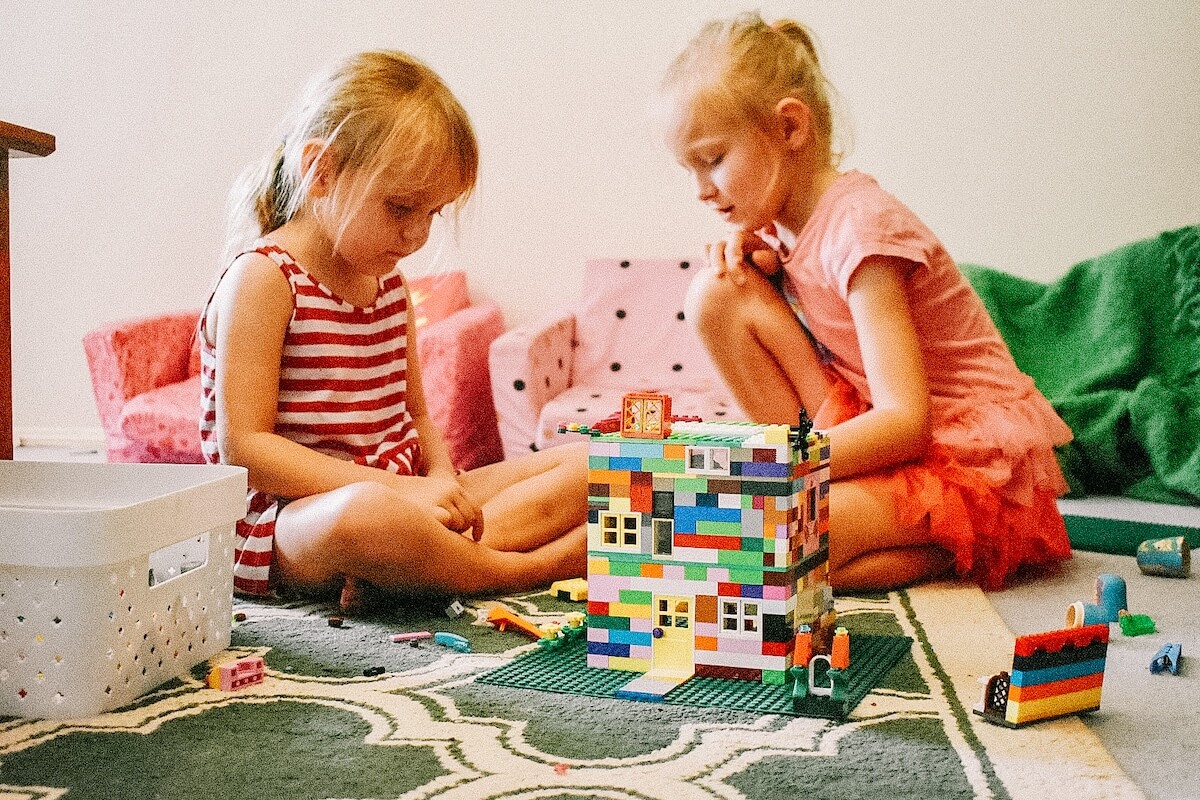Preparing For Temporary Home Schooling + Printable Schedule
This post may contain affiliate links. Read the full disclosure
Temporary home schooling does not need to be overwhelming. With these simple tips and ideas, you can set up a thriving home school schedule for your child and get them back to learning with minimal disruption. With a free homeschooling schedule and activity guide printable.

How To Get Started With Short Term Homeschooling
Approximately 20,000 children are homeschooled full-time in Australia currently, with this figure rising each year.
Short term homeschooling is not something most of us anticipate as being part of our future. Especially since official homeschooling requires formal registration and approval.
Usually, we expect short-term home school to be travel related. However, it may occur for unexpected reasons too, such as a national or global crisis, or an illness preventing your child from attending traditional schooling.
As parents, we want to be confident we are giving our children the best educational experience, even if we ourselves may not be experienced in doing so.
For me, I have previously worked in the field of psychology for many years, including a period of working with children in schools. I also studied to become a teacher, yet the idea of homeschooling is still completely daunting. What makes it especially daunting is simply that it’s not something we ever planned to do.
There is a lot to consider when getting started, from the homeschool laws in your local school district to the homeschool curriculum, your child’s learning needs and any special needs they may have.
Check out my printable home school planner for longer-term homeschooling organisation.
These are the things I am doing to set myself up to temporarily homeschool my children:
Create a Tidy Workspace
Before you even consider homeschooling your kids, if you have the time, start by preparing your space. Learning is challenging enough already. It becomes far more difficult in an untidy, cluttered area.
If you have a desk you can use, clear it of clutter. Otherwise, a tidy kitchen table or bench are great alternatives.
A dedicated workspace will make a big difference in being able to concentrate. After all, kids aren’t used to having to be so focused when they are at home so minimising distraction is important!

Organise Resources
When you find yourself faced with temporary home schooling without much notice, you may not have a lot of time to prepare for it.
Do your best to source the essentials, such as pencils, pens, paper and other stationery items your child may need.
If you have access to learning materials from your child’s school, this is certainly a massive help. If you don’t, there are plenty of free resources available.
Maintaining contact with your child’s teacher through email or phone can help you know what to focus on.
Most state education websites will offer some learning resources online. They also recommend approved online resources you can use.
Sites such as Twinkl or TeachStarter are filled to the brim with age-appropriate learning materials, activities and workbooks that you can print off. Many of these are free or low cost.
Just make sure you are using resources that are relevant to your child’s curriculum and ability levels. Their teachers can assist with pointing you in the right direction though.
Online learning programs can be an amazing support tool as well. We use Reading Eggs & Mathseeds here in Australia. ABC Mouse is a great option if you are in the USA. Both offer free trials if you don’t have a school account already.
Create A Schedule
School kids thrive on routine. This supports their learning and sets expectations for children in a school environment. The same goes for homeschooling.
Plan a schedule for your home school day, which may emulate your child’s typical school routine, or it may be different to suit the way you want to structure your day.
We set a daily schedule but keep some flexibility knowing that sometimes there may be other things we need to do during the day or things that happen that take longer.
You may not be able to work during typical school hours either, so homeschooling for you may be afternoons and evenings. Either way, a schedule will be your friend!
Get my free printable short-term home school schedule & activity ideas:

Incorporate Play
Play is essential to learning. Especially with younger kids. While this looks different for older children where play may be coding or working on an art project, for younger kids play is all about fun!
Making learning fun is one of the best things you can do to encourage a love of learning in your children!
And there are so many fun things you can do together at home.
Some of the work won’t be fun, so fill your day with activities they enjoy or unique ways of teaching core content. It may mean setting a LEGO building challenge to get them thinking critically. Or use their toys to demonstrate a maths problem.
Be a fun mum… and home teacher! It will make life easier for you and your kids if you are all happier!
Here are some learning through play ideas:
- LEGO colour sorting or counting
- Set up a shop to teach about money
- Use toy cars to demonstrate motion
- Form letters using playdough
- Practice fine motor skills with intricate toys i.e. Operation board game, pick up sticks, weaving buttons onto string
- Teach science through making and playing with slime
- Creative skill through messy play

Take Regular Breaks
Here in Australia, kids take 2 or 3 lunch breaks during the school day. Our kids’ school currently does 3, with a play first then eat.
These breaks are crucial for resetting their minds for more learning. Just like us when we are trying to be productive, breaks help kids to refocus.
Plan meal and snack breaks into your day, as well as active time.
We start our day with physical activity. This helps get some of the excess energy out before sitting down to work.
Exercise is linked to improved concentration, and when temporary home schooling for the first time, this is exactly what we want! Although make sure you don’t wear them out too much before the day begins.
Here are some ideas for incorporating physical activity into your homeschool schedule:
- Go for a walk and boost your step count
- Do a 10-minute yoga session
- Try an exercise routine for kids – there are heaps on YouTube
- Put on music and dance around
- Go to the park for a play
- Set up a simple obstacle course in your backyard
- Take 60 seconds to stretch or exercise on the spot
- During summer incorporate some water play activities
For more ideas grab my free printable bundle which includes this list of home school activities for younger children.
Stock Up On Food
Make sure you’ve stocked up on healthy lunch and snack options for your children. Just like packing a school lunchbox each day, you want to offer them similar balanced options at home.
We have a fridge snack station set up for snack breaks, to give our kids easy access to healthy options without having to ask every time.

Here are more snack & lunch ideas:
- 75 lunch box food ideas
- Delicious lunch box recipes
- Easy lunch recipes for home
- Healthy muffins for kids
- Afternoon snack ideas
- Home lunch ideas for kids
Turn Everyday Tasks Into Learning Opportunities
Not everything needs to be a structured lesson when you are teaching your child at home. You can make the most out of everyday moments and tasks, and turn them into teachable moments too.
Never underestimate the value of teaching your child life skills too. While they are home, getting them involved in cooking and cleaning tasks teach them responsibilities.
As you cook, you can also teach maths. For example, you can easily demonstrate fractions with ingredients.
As you are walking to the park, encourage their observations on what is happening around them. You could even turn this into a writing activity when you get home, asking them to recall as many things as they can from your walk.

Encourage Sharing
Have your child lead their own learning by sharing what they know. If you have more than one child at home, ask them to be the teacher for a session and teach the rest of you something they know a lot about.
You might suddenly get an education on dinosaurs or Barbie accessories, which enhances their speaking skills and helps build confidence in your child.
Having your older child support younger siblings with their learning can reinforce their own learning too.

Important Things To Remember When Temporarily Home schooling
If you are taking on homeschooling for the first time, it’s natural to feel overwhelmed. You are possibly feeling inadequate in some ways, wondering if you will fail your child.
Remember – You are not a teacher! Don’t set yourself unrealistic expectations.
Do what you can because anything you are doing is better than doing nothing. You are capable of more than you may realise!
Work on the fundamentals. If you feel overwhelmed, focus on keeping it simple. English and maths. Those are the big ones. If nothing else, reading, writing, spelling and maths are the best places to start.
Seek help! You don’t need to go at it alone. There are so many resources out there and you still have links to your child’s school to seek extra support too.
If your child is a reluctant reader, these tips will help motivate them to read more.
Quick Tips For Short Term Home School
- Laminate worksheets such as tracing and word-formation so you can wipe clean and reuse
- Have fun with learning
- Quiet time activities are good for everyone
- Use what you have – toys, games, old notepads
- Turn everyday tasks into learning opportunities
- Set up a homeschooling schedule but be flexible
- Healthy snacks, exercise and regular breaks are essential
- There are online resources for EVERYTHING
- Ask your child’s teacher for support
- Schedule in quiet time to give you all a break
- You don’t have to be perfect – your best is enough!
When it’s time to head back to school, kids may have some anxieties about being back. Especially younger kids. These books about starting school and managing separation anxiety can help prepare them.
For whatever reason you may be faced with temporary homeschooling, these steps will help you set yourself up for a successful short-term transition. You may even decide you love it enough to switch to homeschooling full-time. Or not…
And if you are homeschooling long term, grab my printable home school planner to help you stay organised with lessons and schedules:

For more back to school ideas and resources, check these out:
- Tips to prepare your child for starting school
- Back to school supplies & essentials
- Lunch box recipes
- Free printable lunch box food list
- Bento lunch box ideas
- School birthday snack ideas
- Children’s picture books about starting school
- First day of school photos
- End of year class gift ideas
- Awesome Teacher gift ideas
- Fun things to do during school holidays







